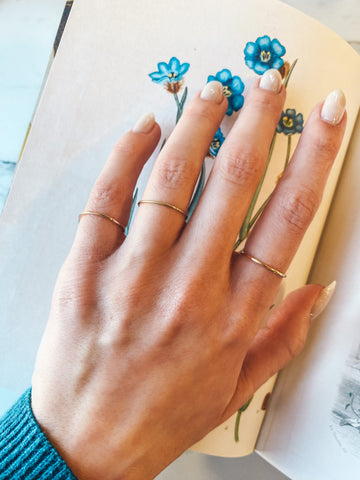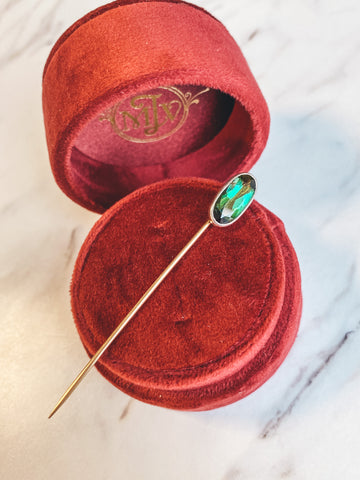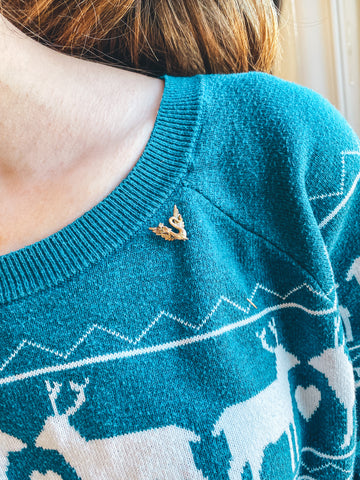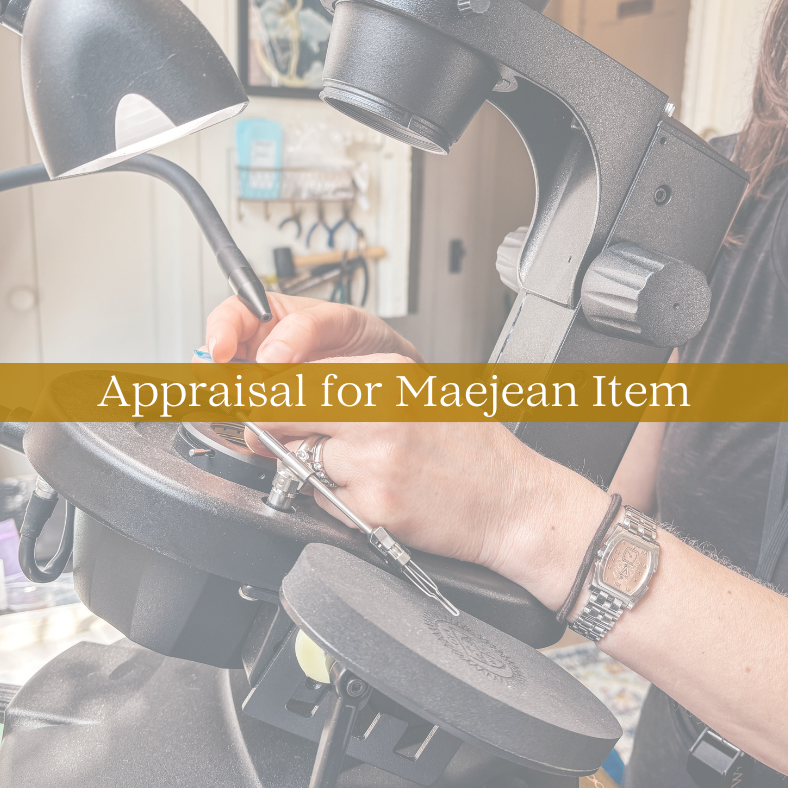Some pieces of jewelry had more practical uses in years' past than they do today, but that doesn't mean we can't find new ways to show them off now. Many people may pass over stick pins as purposeless in this day and age, but they would be entirely incorrect! Let's take a look at these special antique collector's items and how we can fit them in to 2023 fashion.
You can check out Lillicoco's excellent post A Little History of Stick Pins for a more in-depth look at the history of these precious antique treasures. In summary, most popular in the Victorian and Edwardian eras, stick pins, or tie pins, are long sticks with decorative ornaments on top. These pins became more popular in the 1830s after a machine was patented that could make them quickly.


Above: Antique photos of gentlemen appearing to wear stick pins in their ties
As one of the only pieces of jewelry that was considered "men's jewelry," these status symbols were most often used to secure ties, cravats, and other men's neckwear until the late 1800s, when they began to be used more by women.


With the changes in fashion and the mass production of zippers and buttons, stick pins fell out of style around World War I. Given that stick pins largely functioned as a fastener for clothing and other accessories, they quickly became more of a collector's item than a functional piece of jewelry.


But we can still find many uses for stick pins today! We love to see them ornamenting a scarf, securing a tie, decorating a bag, or even secured in an updo. But one of our favorite things to do is upcycle stick pins by turning them into something new.


Many stick pins can be converted into pendants, or even rings! When our jeweler converts a stick pin to a ring or pendant, the stick pin itself becomes the ring band or part of the pendant bail while the ornamental head of the pin becomes the centerpiece: the head of the ring or the pendant itself. A laser welder is usually used to join the pieces together to make a brand new piece of jewelry!
Due to the thin nature of these pins, they make wonderful minimalist gold bands for a daintier look. Some of these gold bands include the original ornamental head of the pin, and others are used to form a simple thin gold band (usually this is the case when the ornamental part is converted to a pendant and there is enough leftover gold from the pin to make a simple band).




Some stick pins are better suited as pendants on a chain than as a ring. Since rings are worn on the hand, they are a type of jewelry that can become worn or damaged more easily. When a stick pin ornament is too fragile to be worn as a ring, we make it a pendant instead! These pendants might be anything from a mythical creature, to one larger bezel-set gemstone, to an abstract shape featuring small gems.
Some of the stick pins that we source are converted, but others we may decide to list in our shop as-is. If you ever see a stick pin in our online store that you're interested in purchasing as a ring or a pendant, send us a message and we'll see what can be done!
An antique collector's dream, stick pins are a treasure trove of possibilities. What's your favorite way to wear these pieces of history?
References:
https://www.langantiques.com/university/stickpin/
https://worldeccentricitycharm.com/blogs/news/121334209-stick-pins
https://www.lillicoco.com/blogs/love-lillicoco-blog/the-little-history-of-stick-pins












